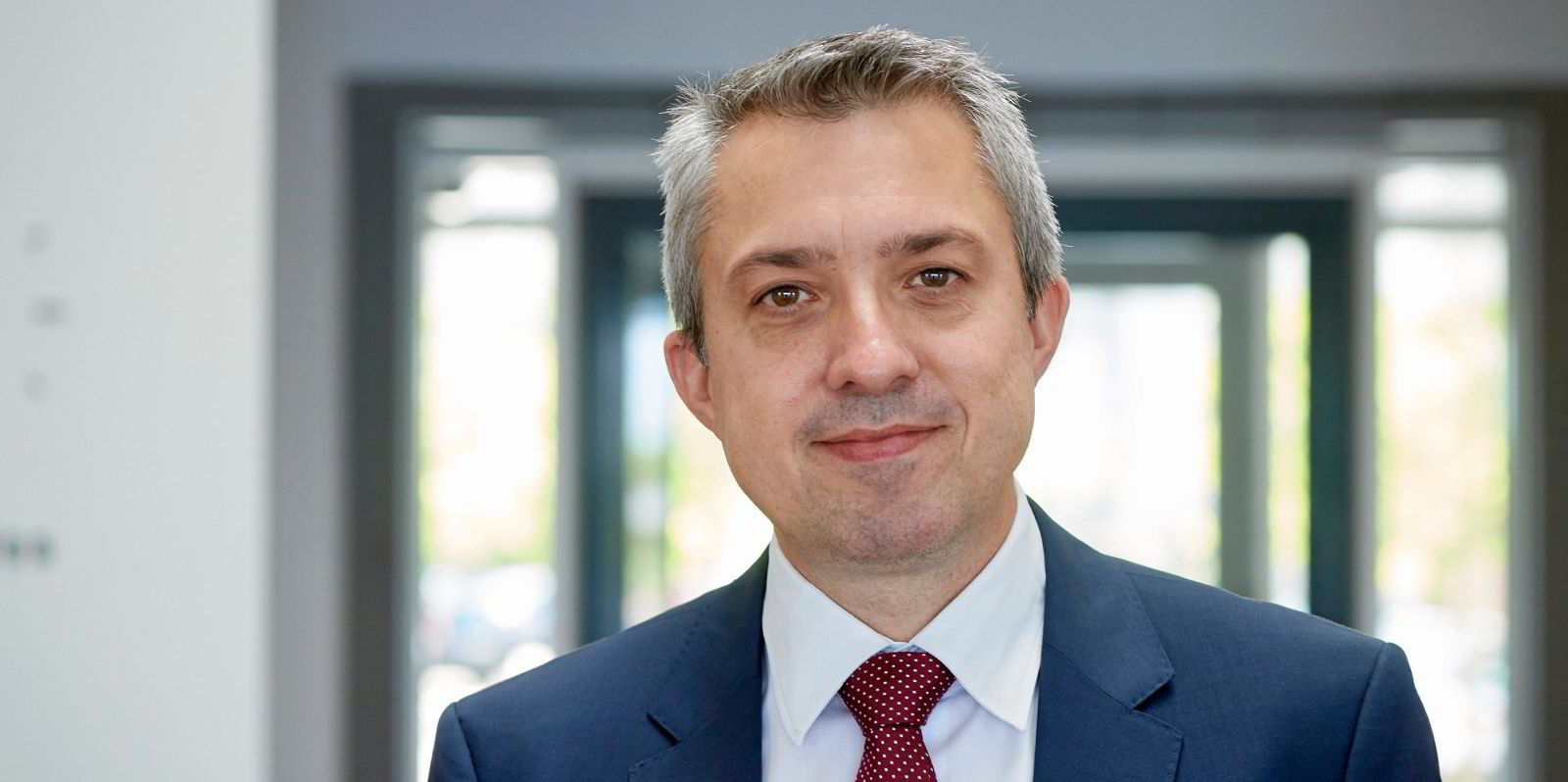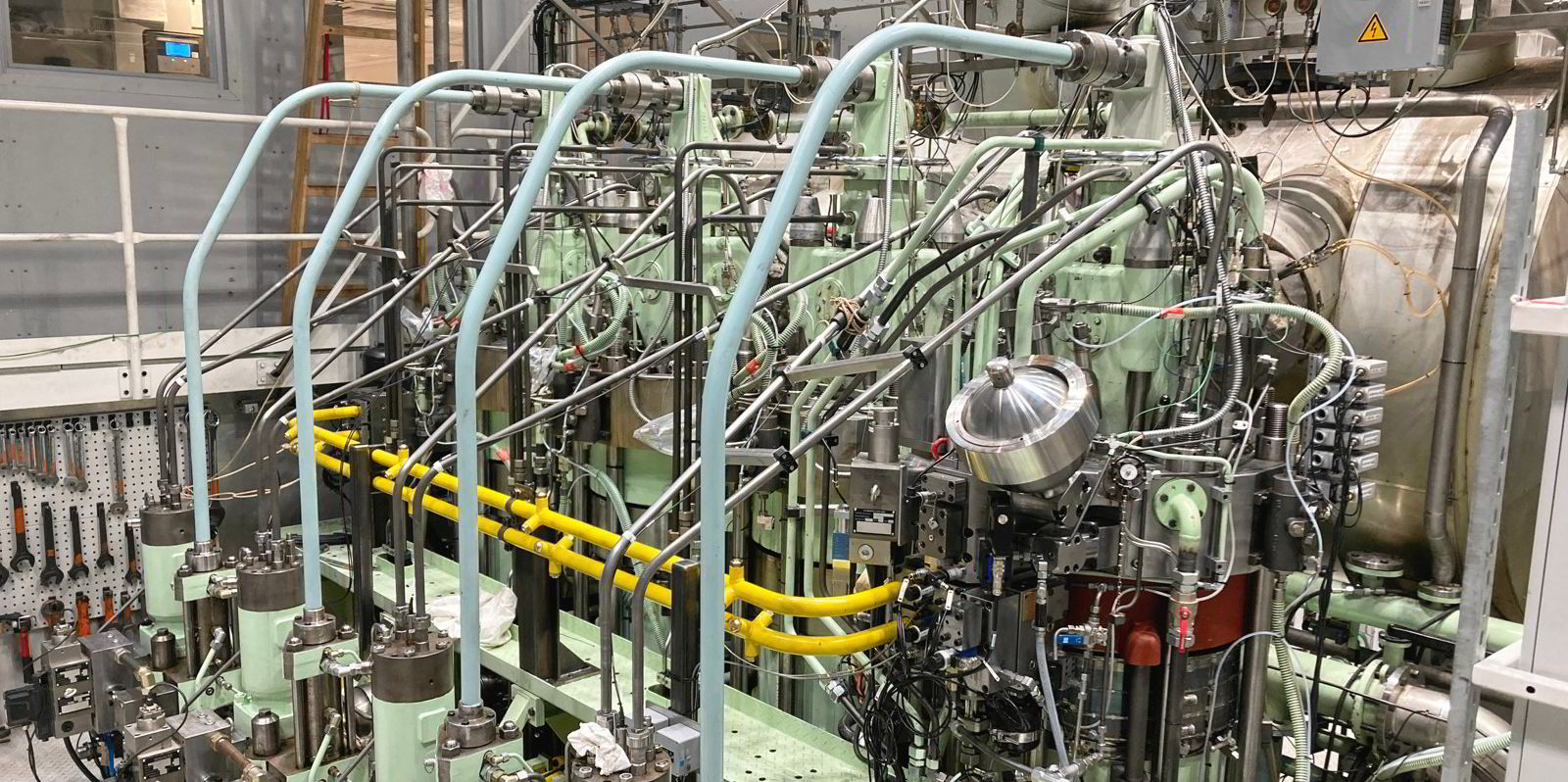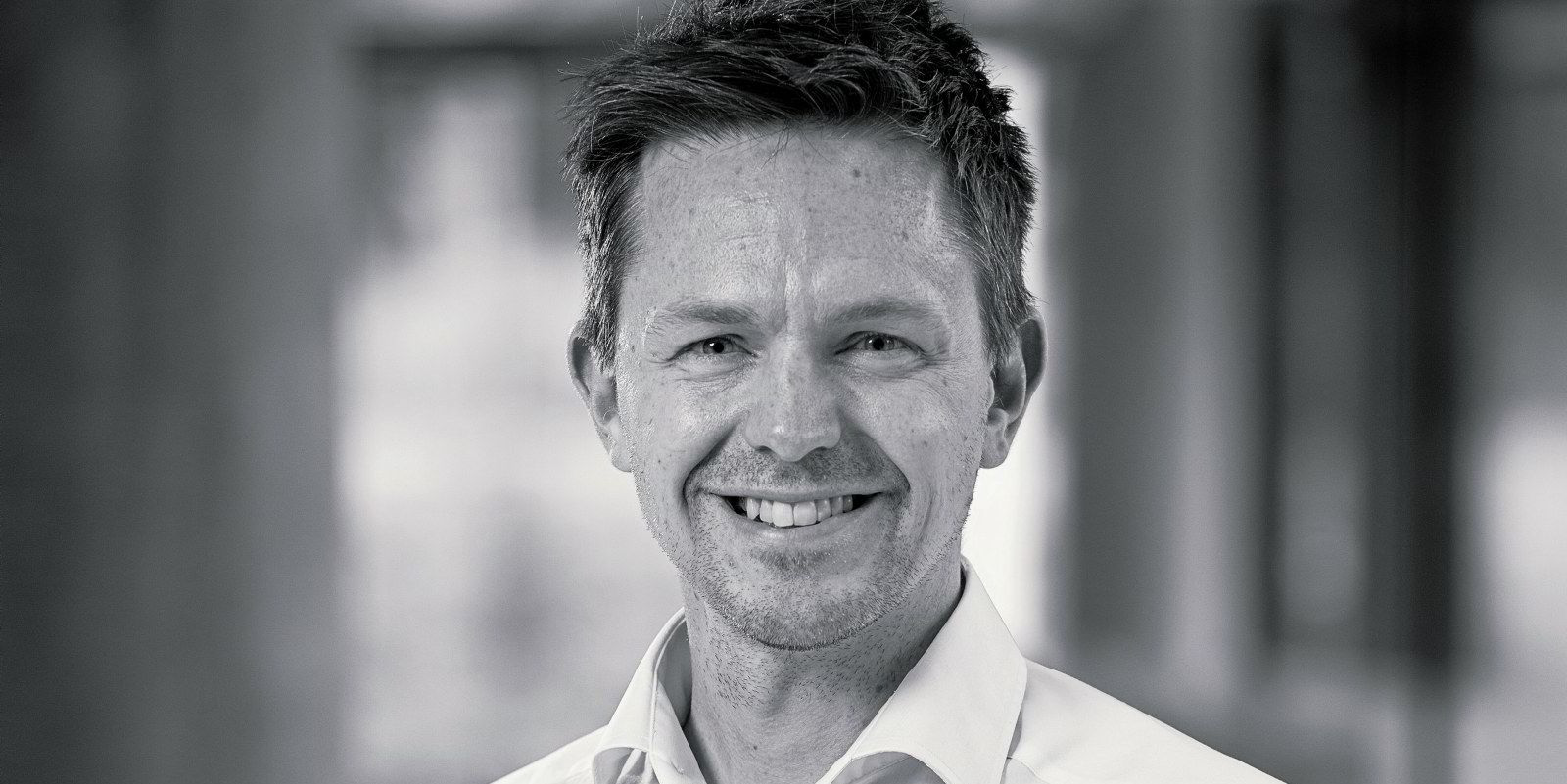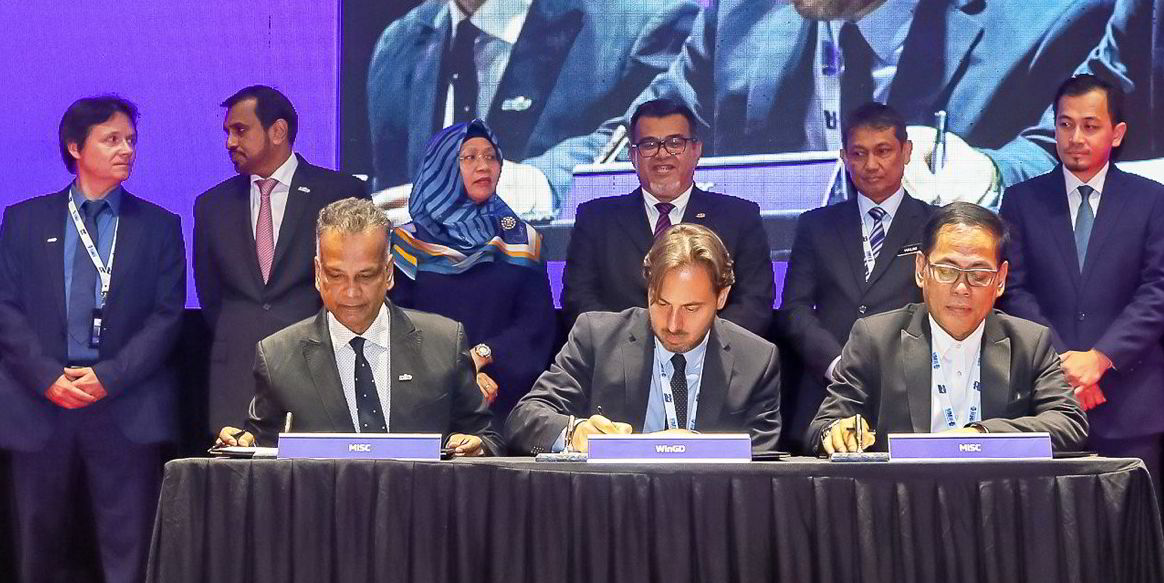Danish engine designer MAN Energy Solutions has kicked off its first engine test of upcoming marine fuel ammonia in a groundbreaking move for the company and the industry.
MAN ES senior vice president and head of two-stroke Bjarne Foldager said the company had decided to bring forward the planned announcement of its breakthrough in what he described as an emergency call to the IMO member nations meeting in London this week.
“We are deeply concerned about the lack of progress at the MEPC meeting,” he said. “This is our 911 emergency call to the MEPC meeting that we really need to see some positive outcome.
“We are doing our part, can you (IMO) now please do your part.”
Speaking exclusively to TradeWinds, vice president and head of research and development two-stroke business Brian Sorensen said that on 3 July the company had the first combustion on its test engine, which was specially rebuilt to handle the new marine fuel.
“We have now started the detailed tests,” Sorensen said. “We are burning ammonia as we speak. This is a major milestone in our ammonia engine development project.
“The result so far looks promising,” Sorensen added, showing photos of the heavily wired-up first cylinder on the test engine, which is the one running on ammonia at present.
“We know we still have a lot of work ahead of us,” he added.
But Sorensen stressed: “We are progressing on the technologies needed for decarbonisation. That is an important message from our side.”
Sorensen said MAN ES had undertaken the “first bunkering” of ammonia at its inner-city research centre in Copenhagen.

The company took delivery of between 2.5 tonnes and 3 tonnes by truck a week ago into its onsite storage tank.
This was delivered into MAN ES’ custom-built “cold hall”, which in the event of any leak ammonia vapour can be contained with the activation of a water screen. Sorensen said the research facility’s downtown location — it has three schools, a police station and 5,000 apartment buildings in the neighbourhood — means that “safety is paramount”.
“We have the technologies,” Sorensen said. “We believe there is a path forward and we are now demonstrating many of these at the test centre, which will actually go on a ship.”
Foldager, who lives 100 metres away from the research centre, admitted he went to his rooftop on Monday night at the start of the tests to check for any signs of ammonia.
“Over the last three years that we have worked on this, we have moved from a position where we were afraid of ammonia and now we have learned much and built the system we have a lot of respect for ammonia,” he said.
“We know it is a safety hazard. It is not something we should take lightly. But we have learned that it can be handled.”
Foldager said that when ammonia becomes widespread as a marine fuel the critical aspect will be the training of the crew and those working with it ashore.
Sorensen said that on the technology side, MAN ES is taking lessons from its other dual-fuel engines and applying these existing safety features to the ammonia engine, giving the example of double-walled pipes in the engine room.
“We are building in that robustness into the design.”
He said there will be new features such on the handling of emissions and for ventilating the system.
Sorensen, who admitted to some “butterflies in the stomach” when the company pushed the button on Monday’s first combustion, said MAN ES is looking at several key data points from its testing centred on emissions, the combustion process and the technical set-up of the engine.
He detailed these include the pilot oil amount needed to combust the ammonia, the emissions profile —particularly with respect to NOx, potential ammonia slip and nitrous oxides — and the safety systems needed.
“The commercial engine must have a greenhouse gas reduction footprint. We cannot replace CO2 with something else. That has a very high focus from our side.”

MAN ES had the approvals in place to start the tests earlier but Sorensen and Foldager said the company wanted to put other safety features in place such as the cold hall before beginning these.
With the first tests now underway, Sorensen said the next step will be to look at the learnings from these — learning the ammonia combustion process, looking at the emissions profile, establishing the boundary conditions for the tests — and then rebuilding the test engine so it can run fully on ammonia around the end of the year or early in 2025.
Sorensen said MAN ES will be installing after-treatment systems at its test facility to ensure that once the engine is delivered there will be sufficient data to make a full ship installation.
MAN ES is sticking to its timeline of delivering a first ammonia dual-fuelled engine by the end of 2024.
The expectation is that this will be installed in a commercial vessel delivering from 2026.
Foldager: “The technology is progressing. Soon we will have the ammonia engine. We already have the methanol engine. What is really critical now is the investment in the production of these fuels.”








